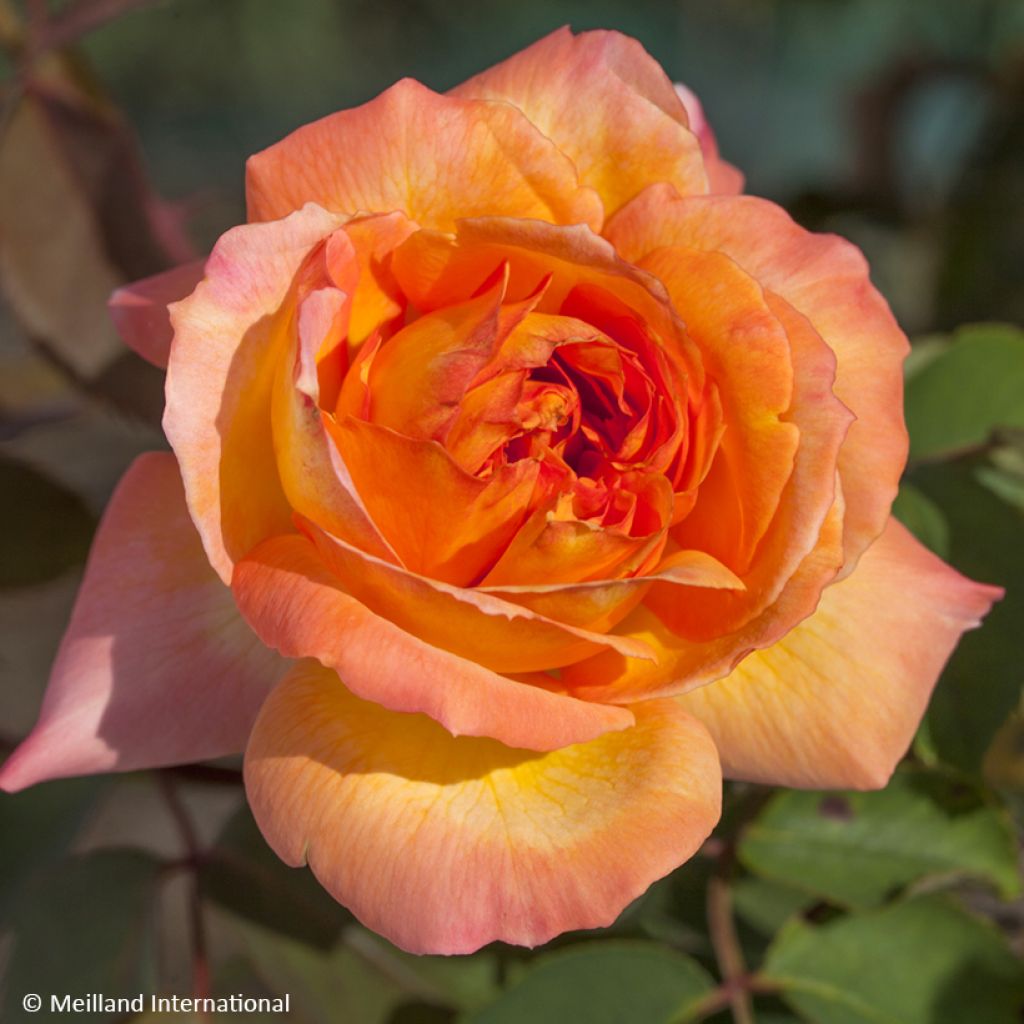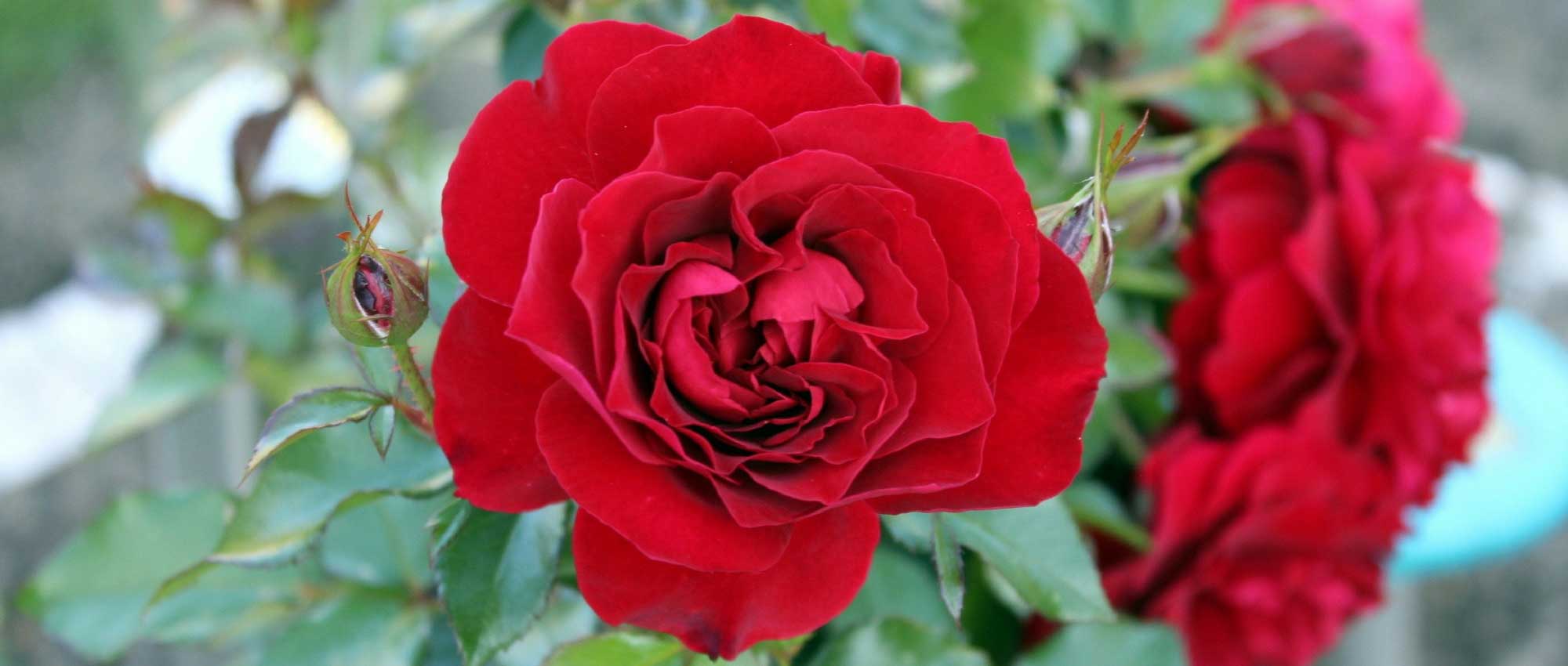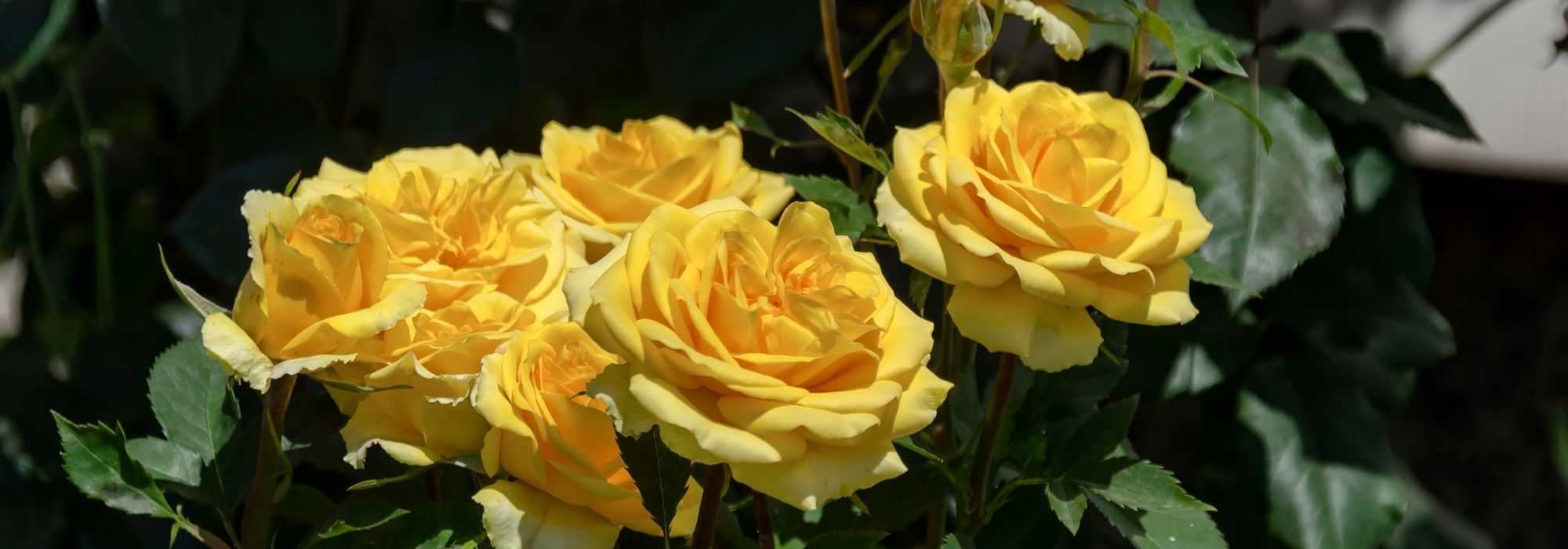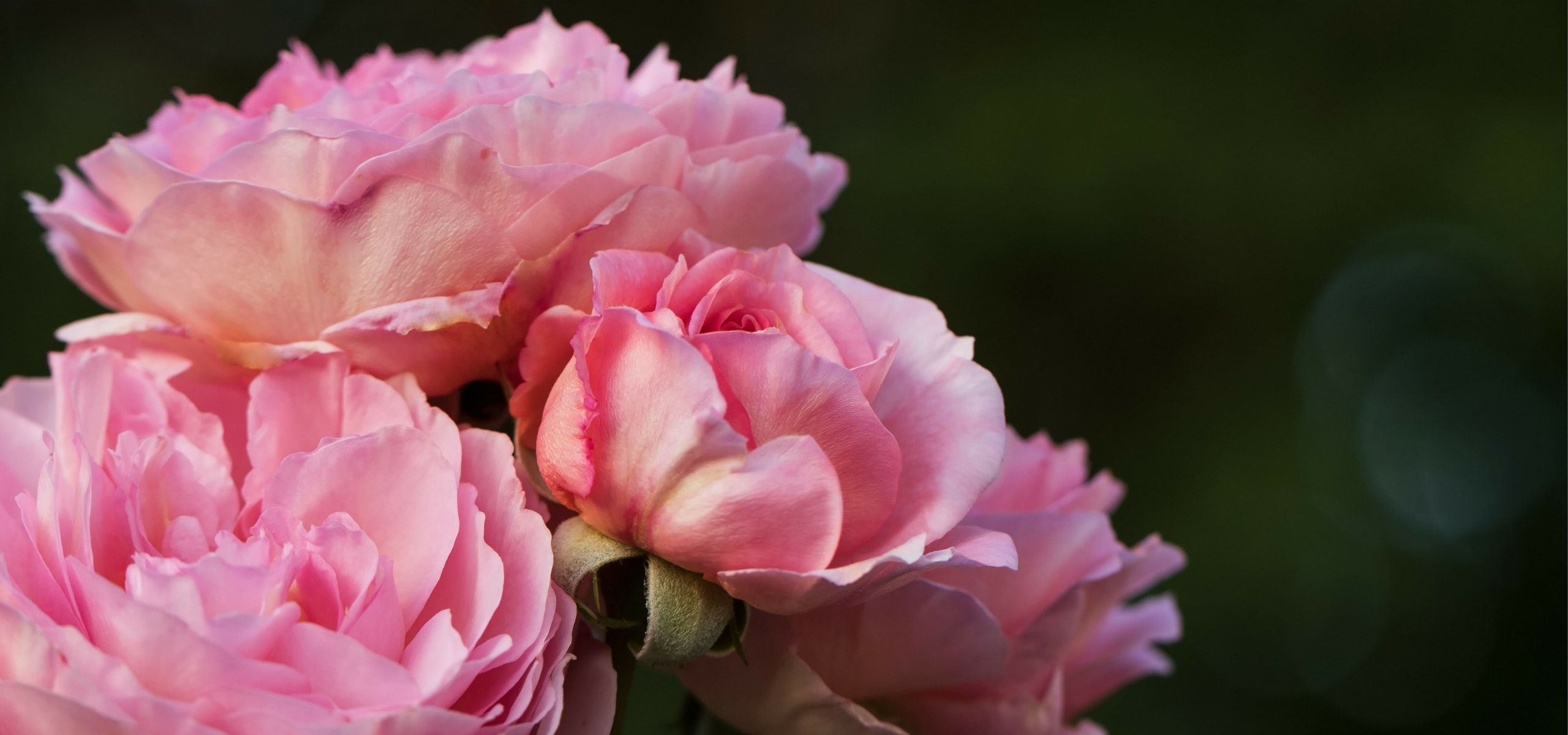

Rosa René Goscinny - Hybrid Tea Rose
Rosa René Goscinny - Hybrid Tea Rose
Rosa 'Meifrypon' RENE GOSCINNY®
Hybrid Tea Rose
The rose bush received is not great (2 short branches and poorly pruned) planted in the ground, I'm now waiting for spring with hope for recovery...(or not?).
Thierry, 07/10/2025
Special offer!
Receive a €20 voucher for any order over €90 (excluding delivery costs, credit notes, and plastic-free options)!
1- Add your favorite plants to your cart.
2- Once you have reached €90, confirm your order (you can even choose the delivery date!).
3- As soon as your order is shipped, you will receive an email containing your voucher code, valid for 3 months (90 days).
Your voucher is unique and can only be used once, for any order with a minimum value of €20, excluding delivery costs.
Can be combined with other current offers, non-divisible and non-refundable.
We guarantee the quality of our plants for a full growing cycle, and will replace at our expense any plant that fails to recover under normal climatic and planting conditions.

Description
The Large-Flowered René Goscinny® 'Meifrypon' Rose is a hybrid tea rose that captivates with the brilliance and opulence of its flowers, evoking the charm of old-fashioned roses while offering exceptionally continuous flowering. From late spring until the heart of autumn, it produces very large roses with warm, luminous hues that evolve over time. Their colour begins as a bright light orange before gradually developing vermillion orange tones on the petal edges, eventually tinting the entire flower. Its intense fragrance reminiscent of a fruity cocktail blending apricot, peach, and grapefruit, enhanced with hints of lime and rose, makes it a particularly cherished variety among lovers of scented roses. Perfectly balanced and well-ramified, it suits flower beds, borders, group planting, and cut flower arrangements alike.
The René Goscinny® 'Meifrypon' Rose belongs to the Rosaceae family and the hybrid tea or large-flowered rose category. It stands out for its exceptionally large rose, reaching 13 to 14 cm in diameter. Their dense structure formed of 80 to 90 petals arranged in quarters gives them a swirling, romantic appearance typical of old-fashioned flowers. Its flowering is remarkable for its abundance and continuity, offering constant renewal despite the impressive size of its blooms. The very dense bronze-green foliage elegantly complements the successive flowerings while ensuring excellent disease resistance. This vigorous yet compact rose reaches a height of 60 to 80 cm with a spread of about 50 cm, making it easy to incorporate into various landscape designs. Beyond its aesthetic appeal in the garden, its particularly long-lasting flowers make stunning cut flower displays, retaining their fragrance and intensity for several days after cutting. Awarded the Golden Rose of Geneva in 2001, it ranks among the most outstanding varieties from the Meilland house.
The René Goscinny® 'Meifrypon' Rose will naturally finds its place in borders or flowerbeds where its flamboyant flowering will bring warmth and light to the garden. It pairs ideally with other romantic roses, particularly those with pastel tones for a delicate contrast, or with taller roses in the background for a gradual volume enhancement. Its fruity colouring will also blend with yellow, orange, or vermillion-red perennials such as daylilies, crocosmias, or coneflowers which enhance its luminous effect while creating a harmony of warm tones. To soften its brilliance, it can be planted alongside light grasses like stipas, adding movement and textural contrast to the floral display. Its abundant flowering attracts pollinators and ensures a renewed spectacle from spring to autumn, making it an essential choice for ornamental gardens.
Plant habit
Flowering
Foliage
Botanical data
Rosa
'Meifrypon' RENE GOSCINNY®
Rosaceae
Hybrid Tea Rose
Rosa 'René Goscinny', Rosa RENE GOSCINNY
Cultivar or hybrid
Planting and care
To plant your René Goscinny rose, prepare the soil by digging a 25 cm cube, breaking up the earth well and adding a base fertiliser such as dried blood or dehydrated horn at the bottom of the planting hole. Place your plant after removing it from its pot, covering the top of the root ball with 3 cm of soil, backfill and water thoroughly to eliminate any air pockets. In dry weather, water regularly for a few weeks to encourage root establishment. Also remember to feed your rose with a special rose fertiliser to promote flowering. Choose a sunny spot, or partial shade in very hot regions.
Planting period
Intended location
Care
Planting & care advice
-
, onOrder confirmed
Reply from on Promesse de fleurs
Haven't found what you were looking for?
Hardiness is the lowest winter temperature a plant can endure without suffering serious damage or even dying. However, hardiness is affected by location (a sheltered area, such as a patio), protection (winter cover) and soil type (hardiness is improved by well-drained soil).

Photo Sharing Terms & Conditions
In order to encourage gardeners to interact and share their experiences, Promesse de fleurs offers various media enabling content to be uploaded onto its Site - in particular via the ‘Photo sharing’ module.
The User agrees to refrain from:
- Posting any content that is illegal, prejudicial, insulting, racist, inciteful to hatred, revisionist, contrary to public decency, that infringes on privacy or on the privacy rights of third parties, in particular the publicity rights of persons and goods, intellectual property rights, or the right to privacy.
- Submitting content on behalf of a third party;
- Impersonate the identity of a third party and/or publish any personal information about a third party;
In general, the User undertakes to refrain from any unethical behaviour.
All Content (in particular text, comments, files, images, photos, videos, creative works, etc.), which may be subject to property or intellectual property rights, image or other private rights, shall remain the property of the User, subject to the limited rights granted by the terms of the licence granted by Promesse de fleurs as stated below. Users are at liberty to publish or not to publish such Content on the Site, notably via the ‘Photo Sharing’ facility, and accept that this Content shall be made public and freely accessible, notably on the Internet.
Users further acknowledge, undertake to have ,and guarantee that they hold all necessary rights and permissions to publish such material on the Site, in particular with regard to the legislation in force pertaining to any privacy, property, intellectual property, image, or contractual rights, or rights of any other nature. By publishing such Content on the Site, Users acknowledge accepting full liability as publishers of the Content within the meaning of the law, and grant Promesse de fleurs, free of charge, an inclusive, worldwide licence for the said Content for the entire duration of its publication, including all reproduction, representation, up/downloading, displaying, performing, transmission, and storage rights.
Users also grant permission for their name to be linked to the Content and accept that this link may not always be made available.
By engaging in posting material, Users consent to their Content becoming automatically accessible on the Internet, in particular on other sites and/or blogs and/or web pages of the Promesse de fleurs site, including in particular social pages and the Promesse de fleurs catalogue.
Users may secure the removal of entrusted content free of charge by issuing a simple request via our contact form.
The flowering period indicated on our website applies to countries and regions located in USDA zone 8 (France, the United Kingdom, Ireland, the Netherlands, etc.)
It will vary according to where you live:
- In zones 9 to 10 (Italy, Spain, Greece, etc.), flowering will occur about 2 to 4 weeks earlier.
- In zones 6 to 7 (Germany, Poland, Slovenia, and lower mountainous regions), flowering will be delayed by 2 to 3 weeks.
- In zone 5 (Central Europe, Scandinavia), blooming will be delayed by 3 to 5 weeks.
In temperate climates, pruning of spring-flowering shrubs (forsythia, spireas, etc.) should be done just after flowering.
Pruning of summer-flowering shrubs (Indian Lilac, Perovskia, etc.) can be done in winter or spring.
In cold regions as well as with frost-sensitive plants, avoid pruning too early when severe frosts may still occur.
The planting period indicated on our website applies to countries and regions located in USDA zone 8 (France, United Kingdom, Ireland, Netherlands).
It will vary according to where you live:
- In Mediterranean zones (Marseille, Madrid, Milan, etc.), autumn and winter are the best planting periods.
- In continental zones (Strasbourg, Munich, Vienna, etc.), delay planting by 2 to 3 weeks in spring and bring it forward by 2 to 4 weeks in autumn.
- In mountainous regions (the Alps, Pyrenees, Carpathians, etc.), it is best to plant in late spring (May-June) or late summer (August-September).
The harvesting period indicated on our website applies to countries and regions in USDA zone 8 (France, England, Ireland, the Netherlands).
In colder areas (Scandinavia, Poland, Austria...) fruit and vegetable harvests are likely to be delayed by 3-4 weeks.
In warmer areas (Italy, Spain, Greece, etc.), harvesting will probably take place earlier, depending on weather conditions.
The sowing periods indicated on our website apply to countries and regions within USDA Zone 8 (France, UK, Ireland, Netherlands).
In colder areas (Scandinavia, Poland, Austria...), delay any outdoor sowing by 3-4 weeks, or sow under glass.
In warmer climes (Italy, Spain, Greece, etc.), bring outdoor sowing forward by a few weeks.









































